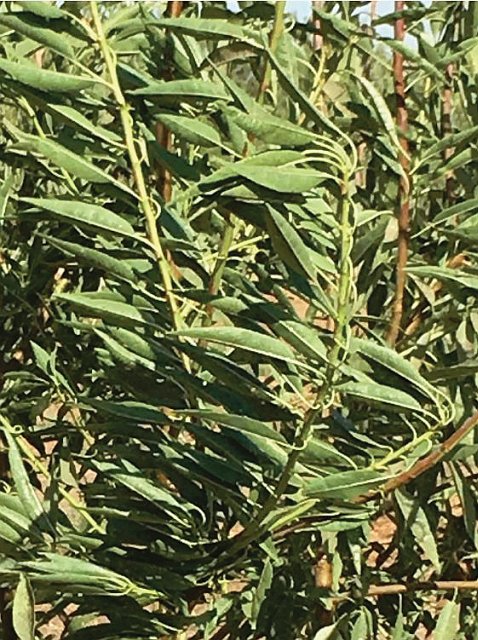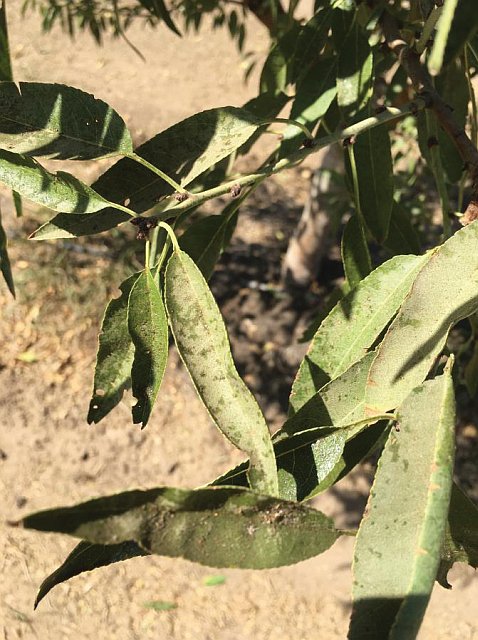You May Be Blowing Off Almond Spray

Leaf shingling from an air-blast sprayer is pictured here. (Photo credit: Wes Asai)
Early on, it appeared the 2016 growing season was going to be a low-mite-pressure year in California almonds, with mild temperatures and above-average rainfall keeping foliage relatively clean from dust. Even entering the peak heat of July into early August, few severe mite outbreaks were being reported, even on blocks that had not been treated with miticides. Then, after periods of heat spikes in mid-to-late August, the mites appeared in force.
While mite outbreaks in mid-summer are nothing new, remedial control efficacy was not successful in many cases. It did not seem to matter what contact adulticide chemistry was used in an effort to “put out the fire,” as failures were widely reported.
I had a young block of 2nd and 3rd leaf almonds that developed heavy mites and webbing in early-September.
Poor Leaf Coverage Can Be Surprising
A thorough spray application of100 gallons per acre (gpa) at a reasonable ground speed (1.75 mph) did not result in good coverage. I changed the ground application to 125 gpa at 1.5 mph and the coverage was still poor, even though visually, the spray plume appeared to be thoroughly blasting the tree with the chemical.

Poor coverage on top sides of leaves, pictured here, is due to the shingling of the canopy. (Photo credit: Wes Asai)
I proceeded to both photograph and video the application and was completely shocked at the poor leaf coverage.
Measuring spray coverage of a tree using water-sensitive strips on poles is not an accurate method of determining efficacy. It does not compensate for “shingling” of the leaves, where the air blast from the fans lays all leaves flat and parallel like shingles on a roof, and the opposite sides of the leaves (usually the top) have poor coverage.
Since applications at this time of the year are dependent on contact materials directly hitting and killing adults, anything less will result in poor control.
I do not purport that this is the only reason that corrective miticide applications are not effective, since some materials are not designed to “put out fires.”

Poor coverage, shown here, on upper surface even at 125 gpa and 1.5 mph. (Photo credit: Wes Asai)
There may be resistance in some situations, but I believe a good percentage of miticide failures this year can be attributed to poor coverage, since even high-gallon applications and slow ground speeds (I don’t know many who go only 1.5 mph) do not provide complete coverage.
Shingling is even more pronounced at higher ground speeds and I know many who go at 2 to 2.5 mph or greater.










